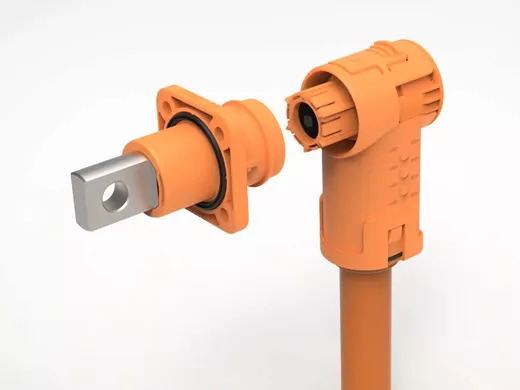What is an energy storage system?
From medium-sized commercial or residential units to large grid installations, energy is stored and stabilized by an array of devices including lithium-ion batteries, inverters, and power conditioning systems (PCS), collectively known as energy storage systems (ESS). Battery storage system is an important renewable energy storage technology. They integrate solar or wind renewable energy into electricity systems everywhere. Off-grid energy storage relies on batteries, enabling users to be 100% self-sufficient. Grid storage solutions allow users to sell energy back to their utility for credit and use inverters instead of batteries. However, some grid energy storage systems add batteries to form a hybrid system so that users have energy even during outages.
ESS is the mainstay of today's smart home. These are usually wall-mounted battery units connected to an AC/DC inverter. Residential systems manage a home's peak and off-peak electricity needs and feed them back into the larger grid, which manages local electricity demand.
Application Of Energy Storage In Solar System
Battery storage technology is an important part of many renewable energy systems and helps off-grid properties use electricity. Battery storage is also increasingly being used in home systems as the technology shrinks in size and price. The principle is the same as the batteries you find in your phone or laptop; the battery charges and stores energy, which can then be used at another time.
In a battery storage system, the key components are the power source, the battery itself, and what's called an inverter -- which turns AC current into DC and vice versa. Inverters are important for scenarios like solar panels that are powered by direct current, which needs to be converted to alternating current before it can be used by other devices -- or sold back to the grid.

Significance Of Energy Storage In Solar System
Battery storage for solar and wind power must operate at optimal levels to be effective. These energy storage systems must react immediately to changing demand, energy loss rate during storage, storage capacity, and charging speed. The energy storage system can ensure the stability of the solar system, store and back up energy, and improve power quality and reliability.
1) Ensure system stability. In the photovoltaic power station system, the photovoltaic output power curve and the load curve are quite different, and both have unpredictable fluctuation characteristics. The energy storage and buffering of the energy storage system enables the system to operate at a stable output level.
2) Energy backup. When the photovoltaic power generation cannot operate normally, the energy storage system can play the role of backup and transition. For example, when the battery array fails to generate electricity at night or in rainy days, the energy storage system will play a role of backup and transition. Depends on load requirements.
3) Improve power quality and reliability. The energy storage system can also prevent the grid fluctuations caused by external disturbances such as voltage spikes and voltage drops on the load from having a major impact on the system. Using sufficient energy storage systems can guarantee the quality and reliability of power output.
What Cables And Connectors Are Needed For Energy Storage
There is often a modular battery storage system to support emergency power for critical electrical equipment. These battery storage systems typically consist of multiple storage cabinets that are modularly combined into containers containing storage units in the form of internal drawers. These energy storage devices require corresponding high-efficiency connectors and energy storage harnesses.
energy storage connector
6mm energy storage connectors, mainly including 80A, 120A series. It has functions such as key position error prevention, positive and negative color error prevention, 360° rotation, etc., corresponding to 16mm and 25mm high-voltage cables. It is suitable for high-voltage connections between components such as energy storage cabinets, energy storage stations, mobile energy storage vehicles, and photovoltaic power stations. 8mm energy storage connectors, mainly including 120A, 150A, 200A series. It has functions such as key position error prevention, positive and negative color error prevention, 360° rotation, etc., corresponding to 25mm, 35mm, 50mm high-voltage cables. 12mm energy storage connectors mainly include 250A, 300A, 350A/400A series. Corresponding to 70mm², 95mm², 120mm² high voltage cables.

Support crimping first and then threading, high production efficiency of wiring harness
The socket is individually sealed to IP67 (optional), and the plug and socket can be connected to IP67 (optional)
The separation state of the head seat meets IPXXB
It has the functions of key position error prevention and color error prevention
It can be inserted at any angle of 360°, and can be rotated 360° after insertion
With secondary locking function
Blind insertion can be realized
HV energy storage cable
High voltage energy storage cables are available in 2-pin and 3-pin power configurations. Each contact ranges from 100A to 500A and can accommodate two small signal contacts for high voltage interlock circuits. Technologies such as high-voltage interlock circuits, electromagnetic shielding, and mechanical shock response are provided in the wiring harness assembly. All types of customized high voltage wiring harness assemblies comply with international electrical safety standards.

Touch-proof and 360° swivel plug;
Compact, rugged design with quick lock and push release design.
Three colors (red, black, orange) are available;
Various termination options
Kuka Cable provides connector solutions for installing energy storage modules. For this case, the connectors can be delivered with cables pre-assembled according to customer specifications. The compact and flexible housing accommodates contacts up to 200 A and 1500 V. The bulkhead housing of this series can be flexibly rotated 360 degrees and the locking of the cover and housing, male and female contacts is very intuitive. Locking the male and female housings together is very intuitive. Blind-mate pluggable connections make energy systems more efficient.





